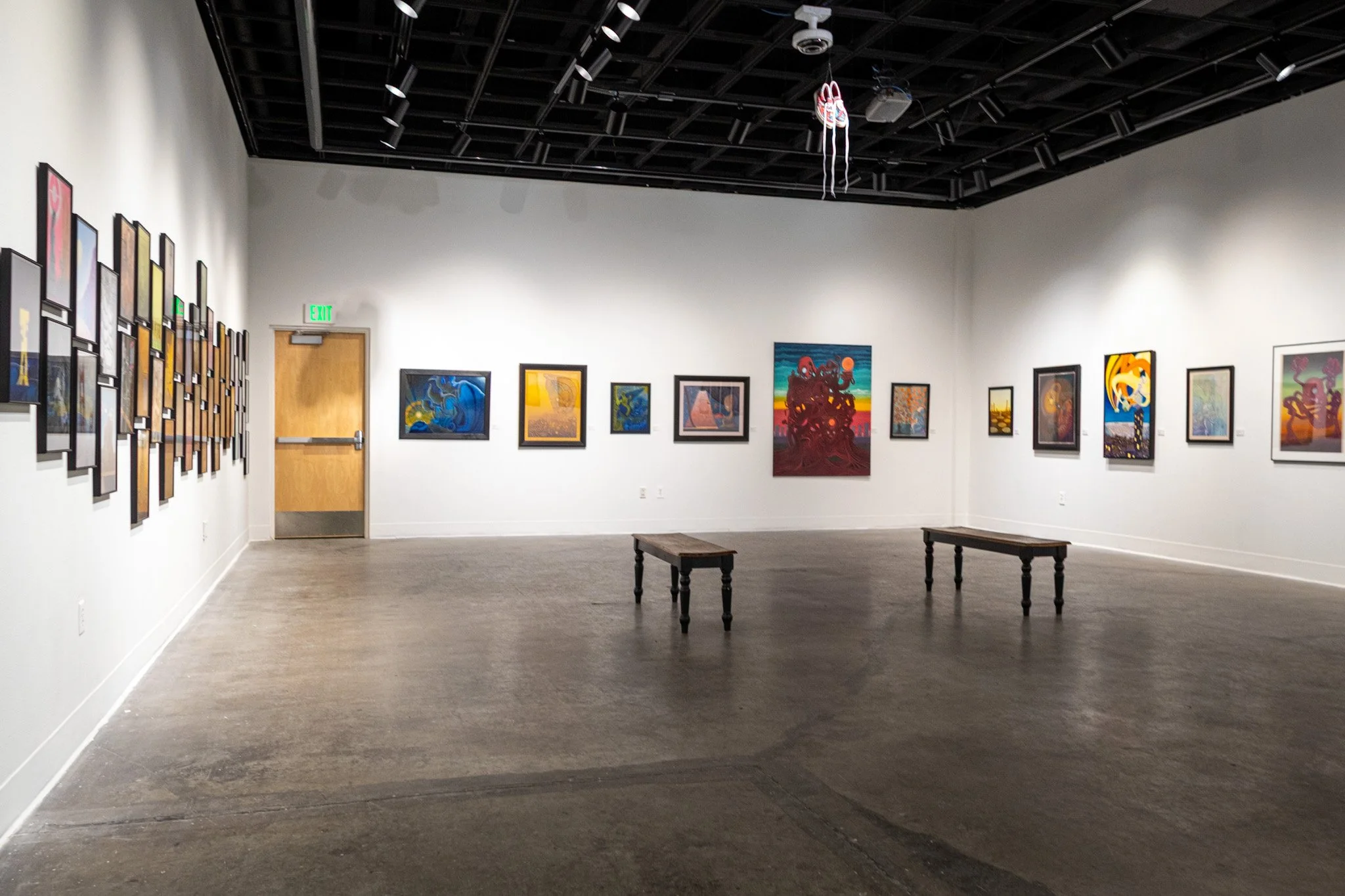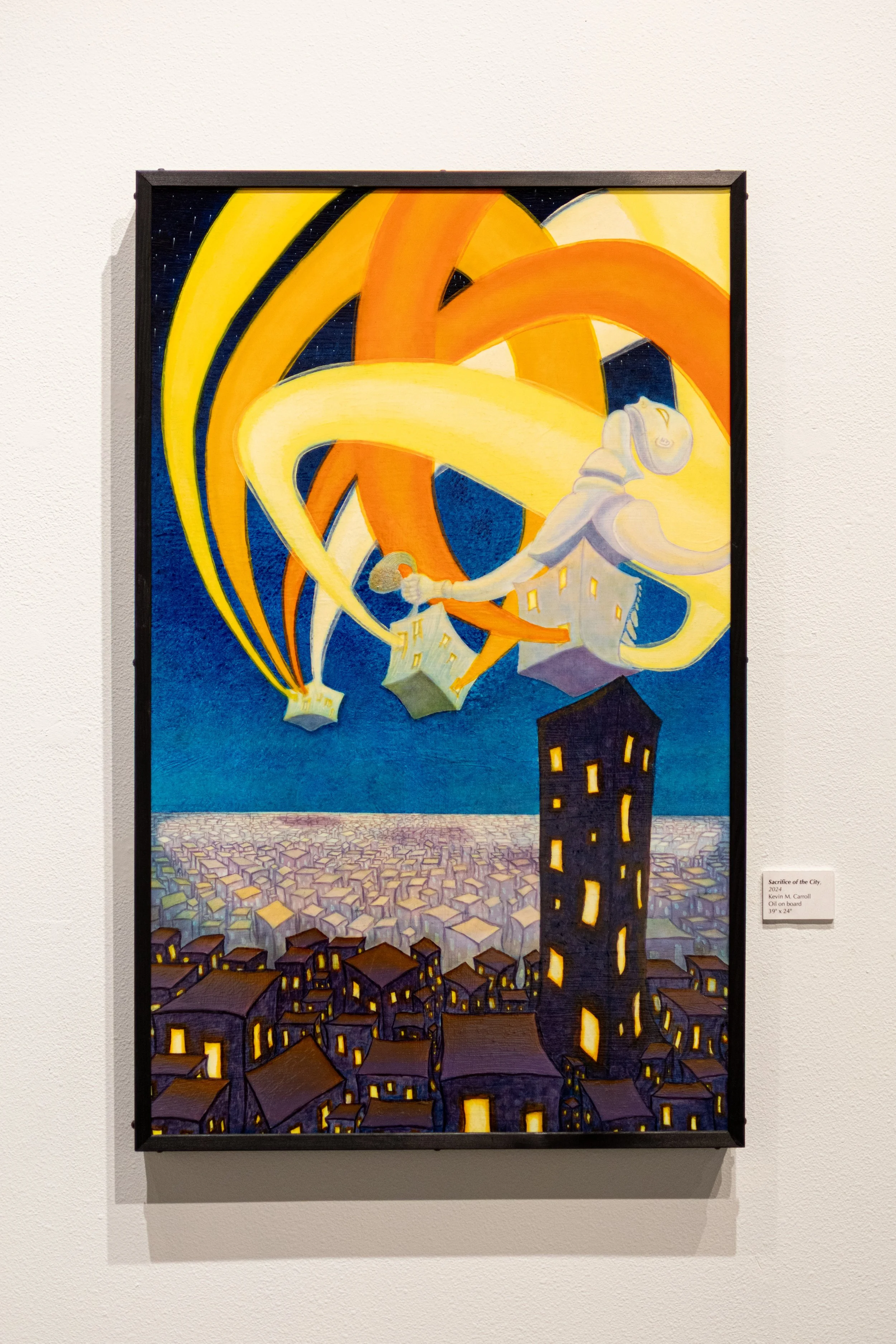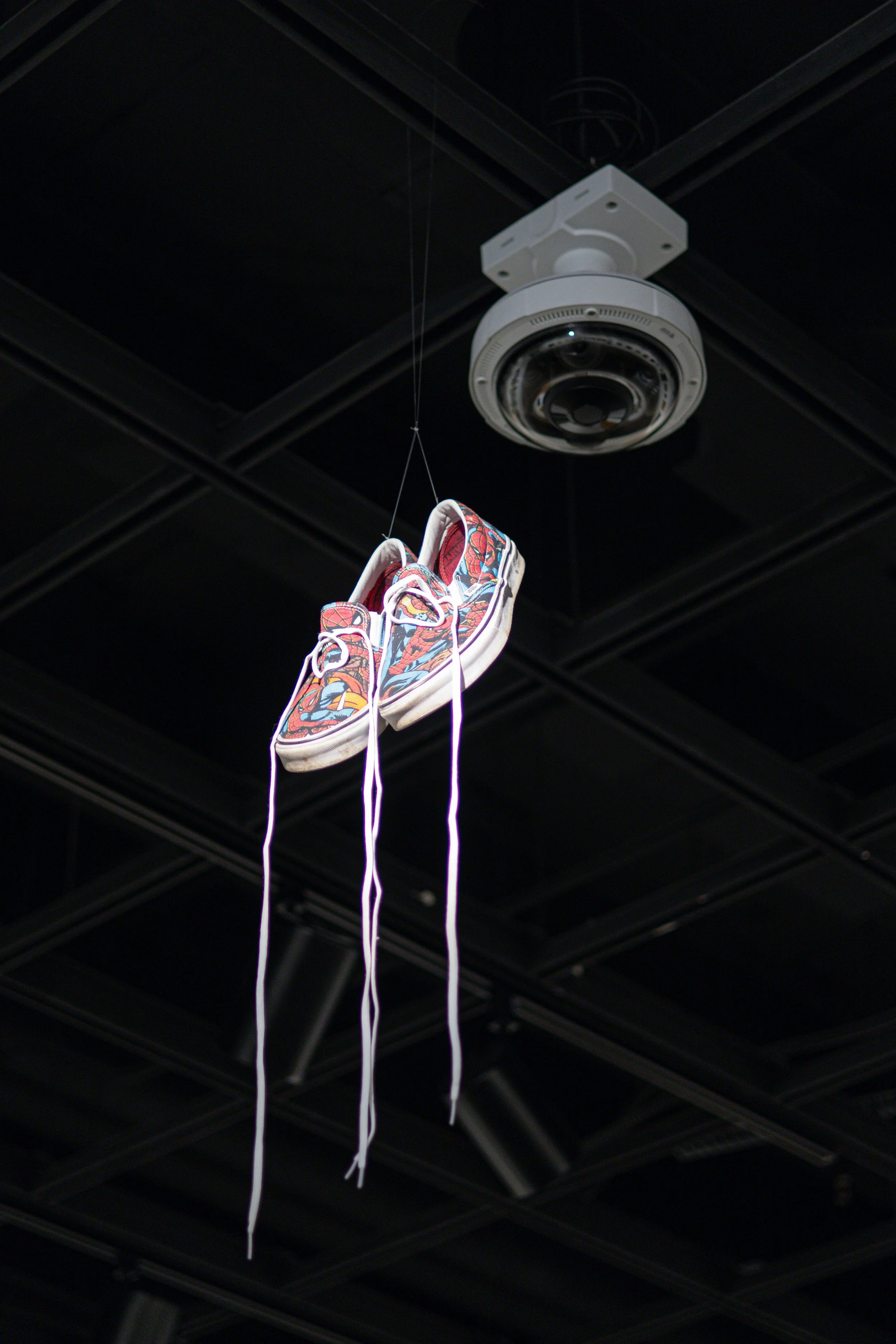Confronting the Sick, Kevin M. Carroll transforms addiction into art
Story by Amber McCain, photos by David McCain
The Sick will be on display in the UAF art gallery until November 14.
In “the Sick,” artist Kevin M. Carroll turns the private weight of addiction into something seen, heard and shared. His 45 luminous pastel and oil paintings fill UAF’s Art Gallery with images that shimmer between beauty and grief, each work a reflection of Alaska’s 45% rise in drug-related overdoses, and of the artist’s own reckoning with what he calls “the Sick.”
“I began to feel my addiction at the time was an entity all in itself,” Carroll said. “I thought if I just avoided the parties and gatherings that the Sick frequented, it would forget all about me.”
On view through Nov. 14, “the Sick” is part autobiography, part data visualization, and part act of healing. Transforming survey responses, personal memory, and mathematical theory into a visual language of recovery.
Carroll grew up in Lower Trainer, south of Philadelphia, in a home shadowed by oil refineries, poverty, and early exposure to drugs.
“I never took my art practice very seriously growing up. … I started using drugs at a very early age.” In his late teens, after an eviction from the last house his family shared, he says he got his first apartment and “sobered up for the first time in my life.” During that sober period, he drew constantly, and he names influences ranging from a Salvador Dali book to his brother’s comics and street-art graffiti.
But addiction pulled him back, and after 11 years in the U.S. Air Force, he found renewed purpose when he quit drinking in 2016 and turned his life toward creating again. He described that moment “like a faucet was turned on in my mind and I felt the need to create again … to understand the Sick.”
Carroll uses the term “the Sick” to describe the entity of addiction as something beyond just substance abuse.
“I began to feel my addiction at the time was an entity all in itself,” he said.
For this body of work, he pulled together personal testimony from himself, friends, family and 45 survey respondents in Alaska, the number intentionally chosen to mirror that overdose-rise statistic.
Carroll’s oil piece titled “Lola’s Work X.”
Drawing on mathematical and scientific frameworks, Carroll invokes the concept of the Cauchy distribution: a “universal non-universality” that reflects how addiction doesn’t fit neatly into statistical averages or cultural stereotypes.
“By focusing only on the visible mean we overlook how addiction manifests through other means such as technology, power, pornography, and consumption,” Carroll continued. “To integrate the space in between myself and words like addiction and substance abuse by filling that space with visual forms.”
Several pieces in the Sick bring vivid, visceral narratives to life:
Children of the Burning Night (32″ × 24″, soft pastel on self-prepared Masonite): A survivor of the Sick stands beneath dangling shoes on a telephone wire, a stark tribute to friends lost, and to Carroll’s late brother whose red shoes and ashes he carries. The figure, rendered in warm three-dimensional tones, stands apart from the flat cityscape behind him. Carroll says the work represents his personal experience of sobriety and loss.
Carroll’s oil painting titled “Sacrifice of the City”
#31 (12″ × 16″, soft pastel on Ampersand Pastelbord): Depicts a child’s viewpoint after losing a father to addiction. The father is under-rendered, silenced; the palette uses familiar children’s-book color schemes to evoke heartbreak.
“This piece captures how losing a parent to substance abuse is much more than just losing a person, it is also losing meaning behind your favorite things and losing your heroes.”
#28 (12″ × 16″, soft pastel on Ampersand Pastelbord): Based on a story provided by an Alaskan survey participant, the piece examines an abusive relationship where the “Sick” becomes a literal demon between the subject’s heart and the woman he loves. The male figure towers; the women appear repeatedly, implying passage of time and the erosion of love.
#25 (12″ × 16″): Focuses on family and friends watching from the perimeter as a loved one succumbs to addiction, immobile and isolated. The subject melts into his space, the sun and moon mark time, and the viewer sees the people who were once close as now meaningless.
Shoes hang from the ceiling in the UAF art gallery.
Carroll works on Masonite boards, a material choice he ties to his blue-collar background.
“Preparing my own boards is a way I connect my experience working in blue-collar trades with art in a meaningful way. … The process is both technical and meditative.” He described how he cuts, sands and finishes the boards: applying underpaintings, glazing oils, spraying alcohol on pastel to dye surfaces, sealing with clear gesso or paint medium. Carroll added that Maxfield Parrish was a major influence for his use of light and transparent layers.
Carroll purposefully grouped the 45 works together to make the statistic visible, then arranged the remaining space to tell the story of “the Sick” in life stages, birth, childhood, adolescence, adulthood and death, moving clockwise around the gallery. To deepen the immersive feeling, he recorded music as the fictional main character Aiden in his upcoming illustrated novel “I Am Zai: Potter and Plant,” and had it play on a loop throughout the exhibition. The design created an audio-visual journey through the progression of life stages, the layered pastel and oil surfaces.
“My work affirms that the Sick follows a universal non-universality spreading throughout our communities almost uninhibited and without a single defining image,” Carroll explained. “While we may not be able to eliminate the Sick, highlighting individual struggles offers understanding and the potential for healing.” For Carroll, recovery isn’t just a personal outcome, it’s what allowed him to “transform hardship into growth.”
The exhibit is on display through Nov. 14 at the University Art Gallery on the UAF campus. Admission is free and open to the public.







